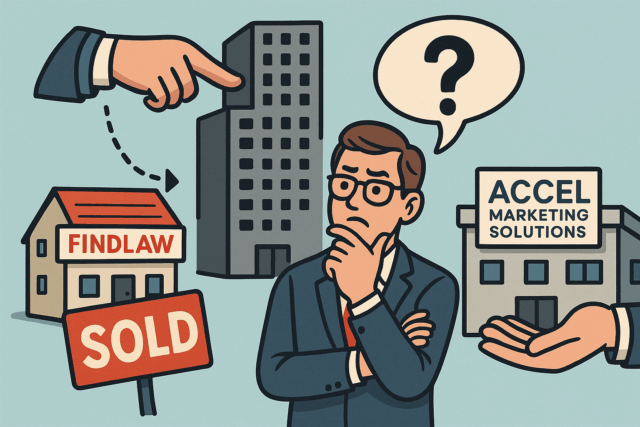AI is changing how people search, compare options, and choose an attorney. Google’s AI Overviews are now shown on millions of U.S. searches and are expanding globally, summarizing answers directly on the results page while linking to sources people can explore. If you want your firm to be cited, visible, and trusted inside those summaries, and in other AI-driven experiences like Bing Copilot and Perplexity, you need a strategy that speaks to both humans and machines. That’s precisely what our law firm AI search engine optimization (AI-SEO) program delivers.
Unlike traditional SEO that targets organic page 1 rankings, AI-SEO optimizes your presence for AI systems that extract, rank, and paraphrase information for a user in SERPs (search engine result pages). These systems reward sites that are clear, structured, verifiable, and authoritative, especially in “Your Money or Your Life” legal topics. Google’s own guidelines emphasize people-first, helpful content, and adherence to Search Essentials; our methods operationalize those expectations.
At Accel Marketing Solutions, we build AI-ready experiences that make your best answers easy for artificial intelligence to quote and easy for clients to trust. We align your content and data model to how AI Overviews, Copilot, and other LLMs locate, summarize, and cite sources.
This approach increases our clients’ visibility in AI-generated search summaries, drives more qualified traffic through surfaced links, and builds a stronger brand presence in a search landscape where answers now come before clicks. Google notes that AI Overviews are designed to include prominent links; we work to make your pages the obvious choice.
Why AI-SEO Matters for Attorneys Right Now
AI search engine optimization isn’t just rebranded traditional SEO. It’s a response to how Google’s AI Overviews, Bing Copilot, and other systems now summarize answers before users click.
Potential law firm clients increasingly ask multi-part, conversational questions. For example:
“Do I need a New Jersey personal injury lawyer after a minor crash?” “How long do I have to file, and what will it cost?”
Searchers then expect one synthesized, accurate response.
AI Overviews and chat-style search experiences meet that expectation by pulling facts from multiple pages, reconciling them, and presenting a concise snapshot-style response with citations. Being one of those citations is the new “position zero,” which may come in the form of a featured snippet or AI overview–the very top of search results.
Microsoft describes Copilot Search as cross-checking information across sites and providing responses with cited sources; Perplexity likewise explains that it searches the web in real time and shows citations. If your firm isn’t among those trusted sources, you risk disappearing above the fold.
Legal/Law is a high-stakes category. Accuracy, provenance, jurisdictional nuance, and consumer protections matter. Google’s people-first content guidance and Search Essentials reflect that: demonstrate expertise and trust, use the language people use, ensure crawlable architecture, and avoid manipulative patterns.
Importantly, local intent is at the core of legal searches. AI systems rely on structured signals to determine your identity, location, practice areas, and target clients. Proper LocalBusiness/LegalService structured data and a complete, compliant Google Business Profile (GBP) help AI systems resolve your entity and associate your content with the right geography and services. Google’s own documentation supports Local Business structured data, and Schema.org defines the LegalService type for law firms. We implement both to make your firm machine-readable.
How We Optimize Your Firm for AI Overviews and LLM-Driven Search
1) AI-First Content Architecture (answers that machines can quote).
We re-map your practice area pages around the exact questions clients ask, by intent, jurisdiction, and urgency. Each page begins with a 120–220-word “Answer Box” summary that states the governing rule, exceptions, and next steps in plain language, followed by scannable subheads that elaborate.
We include short, attributed definitions; jurisdiction-specific deadlines; eligibility tests; and outcome factors. The goal is to give AI systems a clean, citation-worthy paragraph and a supporting page they can mine if the summary is selected for an AI Overview.
2) Entity & jurisdiction modeling (make your expertise unambiguous).
We identify the entities that uniquely define your authority, such as courts, statutes, forms, agencies, and neighborhoods, and weave them into copy, internal links, and schema. For example, a New Jersey statute of limitations explanation links to the specific Title and Section and names the applicable court. This helps retrieval systems match your page to long-tail, multi-clause queries (and reduces the risk of your answer being applied to the wrong state).
3) Structured data that machines rely on.
We implement JSON-LD across your site to describe your organization, attorneys, locations, and services. At minimum, we deploy the following:
- LegalService, LocalBusiness (with NAP, areaServed, hours, geo, and service descriptions);
- Organization and Person for firm and attorney bios (with bar numbers in identifier fields, publications in hasPart/creativeWork);
- FAQPage where appropriate to capture canonical Q&A; and
- Legislation or CreativeWork for original legal explainers that cite primary sources.
We validate against Google’s general structured data policies and test with Rich Results tools to ensure eligibility and avoid misleading markup.
4) Editorial governance for E-E-A-T (trust signals that scale).
Every important page carries: an author line (with credentials), an editorial review by an attorney, citations to primary law or authoritative secondary sources, last-reviewed dates, and jurisdictional scoping. We create author hubs consolidating publications, speaking, and case commentary to reinforce experience, and we maintain version histories so updates are auditable. This directly supports Google’s people-first guidance and aligns with how raters evaluate trust, which in turn informs system-level improvements.
5) Layout and language patterns AI prefers.
We use descriptive H2/H3s framed as questions; define terms inline; provide numbered steps for processes (e.g., filing timelines); and include compact tables (thresholds, fees, penalties). Paragraphs are concise, but we allow an initial synthesis followed by details, because AI systems often quote the first well-formed summary while humans skim the rest.
6) Local presence that AI can verify.
We standardize NAP across your site and citations, build robust GBP profiles per office, add service areas and categories that mirror your structured data, and keep hours, photos, services, and Q&A fresh. Review management is integrated (solicitation policies respected), and we publish GBP posts to reflect timely topics, settlements (within ethical limits), and community involvement. These steps strengthen the entity graph connecting your firm to place, practice, and reputation.
7) Technical groundwork for crawl, index, and extraction.
We simplify URL patterns, fix internal link depth, ensure robots directives don’t block key content, maintain XML sitemaps per content type, and improve page experience so render-blocking doesn’t hinder extraction. While AI Overviews can summarize slower pages, we see higher citation rates when pages are fast, mobile-friendly, and stable, which mirrors Google’s overall best practices.
8) Off-site authority that AI considers.
Because LLMs often corroborate answers across multiple reputable sources, we run digital PR and legal scholarship outreach to earn placements that clarify your topical authority (bar associations, local media, clinics, universities). We also contribute substantive, non-promotional explainers to authoritative sites, which can be cited directly in AI snapshots, even when the user never clicks through to your domain.
9) Bing Copilot & Perplexity readiness.
We target Bing’s index and top results because Copilot’s generative answers prominently cite sources and cross-check across sites. We also optimize content to be “answer-extractable” for Perplexity, which explicitly searches the web in real time and lists citations; that includes cleaner titles, stronger ledes, and fewer buried answers. This diversification increases your odds of being referenced wherever a client searches.
10) Risk mitigation for AI mistakes.
Generative systems can misstate law or mix jurisdictions. We reduce that risk when your pages are used as sources by: adding jurisdiction tags in copy and code, repeating the state in rule statements, linking to primary law, and including clear scope notes (“New Jersey law; different in Pennsylvania”). Those cues help both machines and readers keep answers in bounds.
How We Measure, Iterate, and Keep You Compliant
Clear KPIs for an AI-driven landscape.
Traditional rankings still matter, but AI search engine optimization demands new indicators, such as:
- Citation Presence: the share of priority queries where your domain appears as a linked source inside AI Overviews/Copilot answers.
- Answer Coverage: the percent of target questions with a page-level “Answer Box” that meets our extraction standards.
- Entity Integrity: structured-data completeness across offices, attorneys, and services; GBP field completeness and review velocity.
- Authority Growth: high-quality, topical links and mentions from legal and local authorities.
- Conversion Health: contact form starts, calls from GBP, appointment requests from answer-led visits.
We track with a blend of GSC data, log sampling, curated query panels for manual AI-Overview checks, and third-party monitors. Because Google is still evolving how AI Overviews appear and what they cite, we report findings transparently and adjust targeting as the feature set changes. Google’s “AI features and your website” guidance confirms Overviews are intended to surface a diversity of sites for complex queries, so iterative coverage building remains a winning approach.
Compliance, ethics, and bar rules built in.
Legal marketing has constraints, such as no promises of outcomes, required disclaimers, restrictions on testimonials and specialization claims, confidentiality considerations. Our editorial controls respect those rules while still producing machine-friendly answers.
We mark sensitive content with scope notes, avoid prohibited language, include jurisdiction-specific disclaimers, and keep review usage within platform policies (and away from “incentivized” pitfalls that could trigger GBP review warnings).
A comprehensive implementation plan.
Here is the typical rollout for a multi-office firm:
- Discovery & Audit: inventory practice pages, locations, attorneys, citations, schema, GBP status, and off-site mentions; map target questions by practice and jurisdiction.
- Authority & Entity Model: define canonical names, sameAs profiles (bar, Avvo, LinkedIn), and jurisdiction-specific content clusters; update internal linking to reflect topical pillars.
- AI-Ready Templates: deploy page templates with Answer Box, jurisdiction tags, table components, and structured data blocks.
- Editorial Sprint: produce or revise core pages first (statutes of limitations, fees, DUI penalties, custody factors), then expand to long-tail “How-to” and “What happens if…” queries; add attorney bios with credentials and publications.
- Local Build-Out: finalize GBP profiles per office; sync services/categories with on-site schema; add photos, service areas, and Q&A; implement review-request flows that meet policy.
- PR & Citations: pursue placements with bar associations, local media, legal aid orgs, and university clinics; publish thought leadership that AI can cite.
- Measurement & Iteration: monitor citation presence in AI Overviews and Copilot for target panels; refine summaries, titles, and schema where we see misses; expand coverage into adjacent questions.
Why this works.
AI Overviews pull concise, sourced explanations for complex questions and feature links for deeper reading; Copilot and Perplexity similarly display cited sources when composing an answer. When your site is easier to parse, fact-check, and quote, and when your entity is crystal-clear, AI systems prefer your pages as references. Our job is to make that preference easy.
Contact Accel for Law Firm AI Search Engine Optimization
If you want your firm to show up where clients are already getting their answers, AI search engine optimization is the path. We’ll audit your current footprint, identify the questions and entities that matter most, and build an AI-ready presence that earns citations, wins trust, and generates qualified consultations. Contact Accel Marketing Solutions, Inc. today so we can get started.


